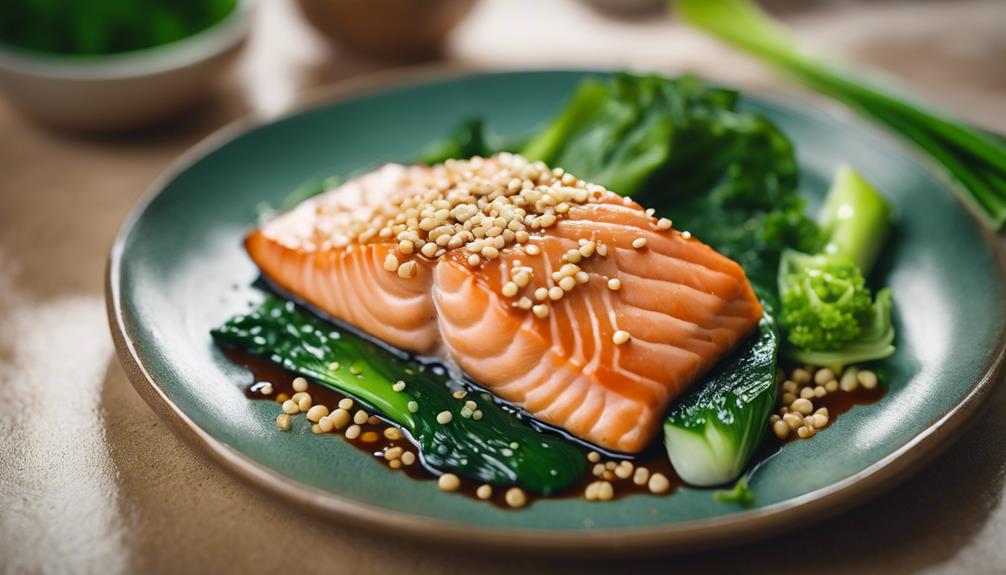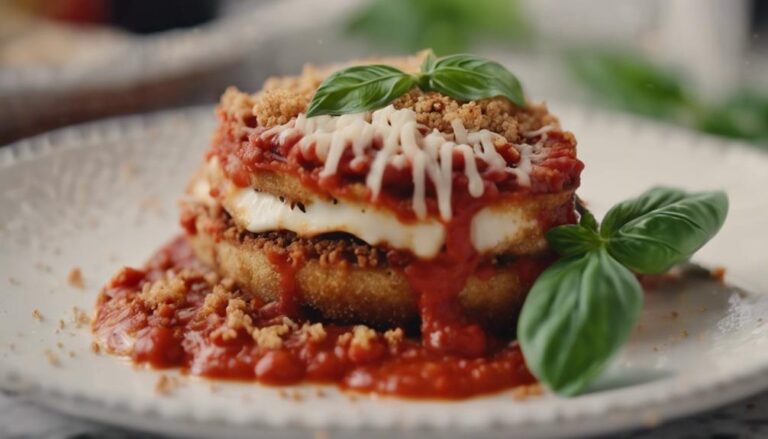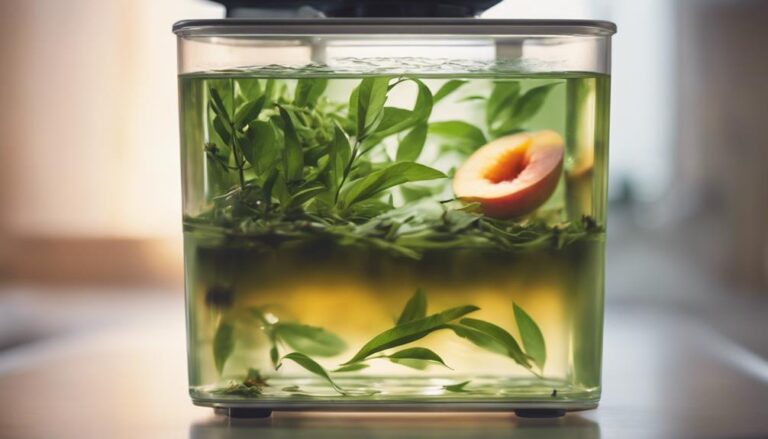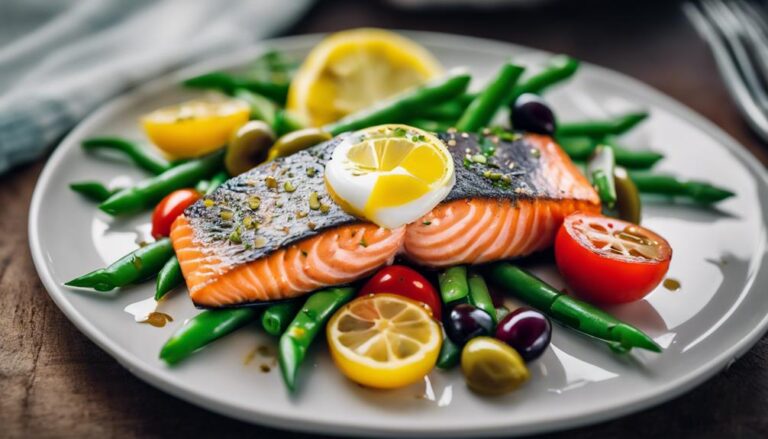Sous Vide Asian-Style Salmon With Bok Choy
Discover a delightful dish by preparing Sous Vide Asian-Style Salmon with Bok Choy. Immerse the salmon in a savory teriyaki marinade, enhancing its natural flavors. Pair it with crisp, vibrant bok choy to create a well-balanced and flavorful meal. This fusion of Asian-inspired flavors will tantalize your taste buds with every bite, offering a unique dining experience that combines tenderness and freshness in every mouthful. Elevate your cooking game by trying out this delicious recipe and step into a world of culinary excellence waiting for you to explore further.
What You Will Learn Here
- Fusion of Asian flavors with sous-vide salmon elevates taste profiles.
- Precise sous-vide cooking ensures perfectly moist and tender salmon.
- Teriyaki marinade enhances the natural flavor of the salmon.
- Bok choy adds a mild crunch and complements the dish's texture.
- Asian-inspired dish with sweet and savory notes for a delightful culinary experience.
Salmon's Evolutionary Path
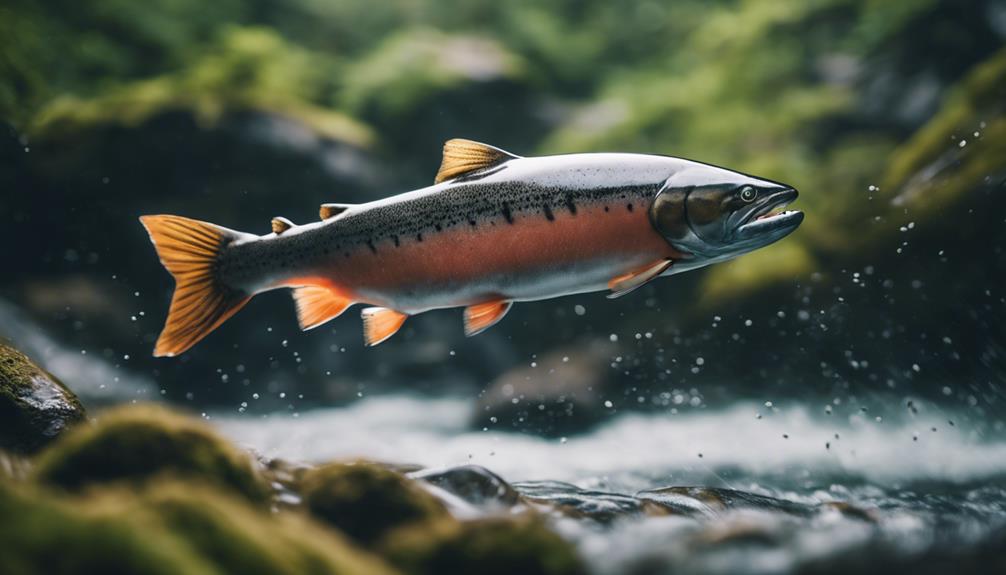
Salmon's evolutionary journey spans millions of years, shaping it into a resilient and adaptable species capable of surviving in diverse habitats.
The Atlantic salmon's distinctive flavor and texture have made it a sought-after ingredient in culinary creations worldwide.
Understanding the evolutionary adaptations of salmon can provide insights into its cultural significance and culinary fusion influences.
Salmons Evolutionary Adaptations
Having evolved unique adaptations for both freshwater and saltwater environments, salmon demonstrate remarkable capabilities in maneuvering and surviving diverse habitats. Their ability to migrate between different environments is a proof of their evolutionary prowess.
Salmon species exhibit anadromous behavior, moving from the ocean to freshwater streams for spawning. The development of acute senses such as smell and vision plays an important role in guiding them during their extensive migrations. Additionally, their streamlined bodies and robust muscles enhance their swimming efficiency, allowing them to traverse long distances with agility.
These evolutionary adaptations have honed the salmon's abilities to thrive in varied ecosystems, making them resilient and successful in their quest for survival.
Bok Choys Cultural Significance
With its rich history in Asian cuisine, bok choy holds a revered position for its culinary versatility and health benefits, complementing dishes like salmon with its mild flavor and crisp texture. Bok choy, a leafy green vegetable, is a beloved staple in Chinese and Japanese cooking, offering a nutrient-rich addition to meals. Its low-calorie content and high levels of vitamins A, C, and K, as well as calcium, make it a valuable and healthy component in various dishes.
This vegetable's mild and slightly sweet taste, coupled with its crunchy texture, adds freshness and a delightful contrast when paired with salmon. Whether stir-fried, steamed, roasted, or used raw in salads, bok choy's cultural significance is deeply rooted in Asian culinary traditions, where it has been cherished for its flavor profile and health-promoting properties.
Culinary Fusion Influences
Rooted in the rich tapestry of culinary history, the evolution of salmon's gastronomic journey intertwines with diverse cultural influences, showcasing a fusion of flavors and techniques that redefine traditional preparation methods.
The incorporation of baby bok choy and teriyaki marinade brings Asian culinary traditions into the spotlight, infusing the dish with a harmonious blend of savory and umami notes. Employing sous-vide cooking further elevates the salmon, ensuring a tender texture and enhanced flavor absorption, a modern twist on crucial techniques.
This fusion of ingredients and methods creates a symphony of flavors on the palate, where each element, from the Thai green curry paste to the delicate bok choy, plays an essential role in shaping the evolution of salmon's culinary narrative.
Salmon Curing Techniques
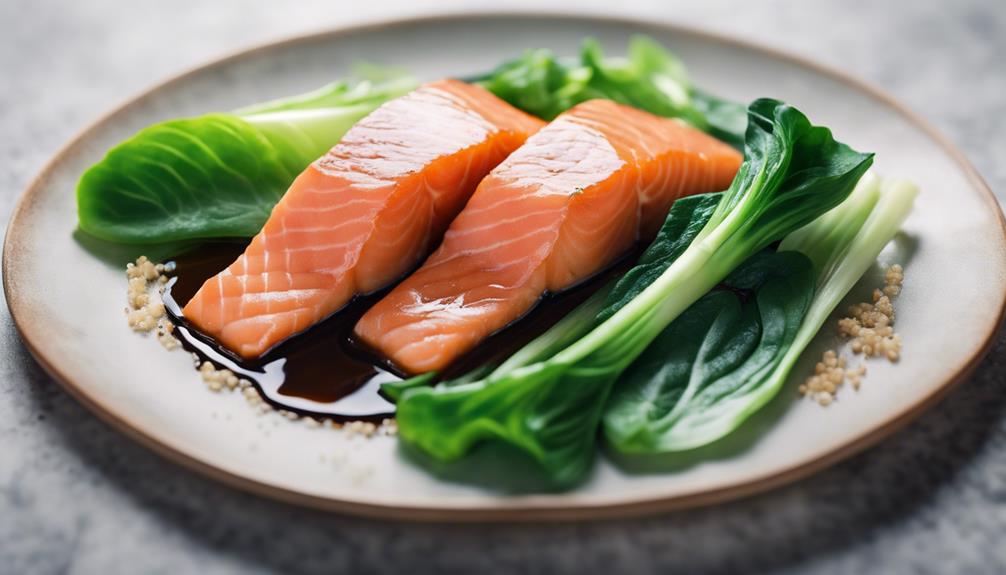
When curing salmon, the process involves seasoning the fish with salt or a marinade to enhance its flavor and texture. Here are some key points to keep in mind when considering salmon curing techniques:
- Salmon Fillets: Start with fresh salmon fillets, ensuring they're of high quality and free from any fishy odors.
- Marinade: Choose a marinade that complements the natural flavors of the salmon, such as a mix of soy sauce, ginger, and garlic for an Asian twist.
- Sous-Vide: Consider using the sous-vide method to cure the salmon effectively. This technique involves vacuum-sealing the fish with the marinade and cooking it in a water bath at a precise temperature, allowing the flavors to infuse while preserving the fish's delicate texture.
Sous Vide Salmon Variations
Explore a world of flavor with sous-vide salmon variations like Thai-infused, teriyaki-glazed, or miso-marinated options. Each variation offers a unique twist to elevate your salmon dish, from zesty and aromatic to sweet and savory profiles.
Experiment with different seasonings and sauces to customize your sous-vide salmon experience according to your preferences.
Sous-Vide Salmon With Thai Flavors
Immerse your salmon in a vibrant blend of Thai green curry paste for a sous-vide dish bursting with spicy and aromatic flavors. The precise sous-vide cooking method guarantees your salmon is tender and full of flavor, while the Thai green curry paste adds a delightful kick to each bite. As the curry paste infuses into the salmon, the flavors meld together, creating a unique and delicious dish.
To complement the salmon, stir-fried bok choy with the curry paste adds a fresh and crunchy element to the plate. The fusion of Thai flavors and sous-vide cooking techniques results in a mouthwatering experience that will leave you craving more.
- Visualize the vibrant green curry paste coating the salmon, infusing it with spicy and aromatic flavors.
- Imagine the tender and perfectly cooked salmon, thanks to the precise sous-vide method.
- Picture the stir-fried bok choy adding a fresh and crunchy contrast to the flavorful salmon.
Teriyaki-glazed Salmon Sous-Vide
Marinate your salmon fillets in a flavorful mixture of soy sauce, mirin, and sake to prepare for the succulent teriyaki-glazed sous-vide cooking method.
When cooking the salmon sous-vide, the precise temperature of 43°C/109°F guarantees a tender and juicy texture that will melt in your mouth.
The teriyaki marinade, with its sweet and savory notes, caramelizes beautifully on the salmon during broiling, creating a mouthwatering glaze that enhances the flavors.
This sous-vide method results in deeply flavored, moist, and tender salmon that's sure to impress your taste buds.
Pairing this teriyaki-glazed salmon with vibrant and crunchy bok choy adds a fresh and nutritious element to your dish, creating a harmonious balance of flavors and textures.
Sous-Vide Miso Glazed Salmon
Preparing a succulent Sous-Vide Miso Glazed Salmon involves marinating the salmon in a flavorful miso-based sauce before cooking it sous-vide for a tender and flavorful result. Here's what makes this dish so special:
- Precise Flavor Infusion: The miso-based marinade permeates every inch of the salmon, ensuring a rich umami taste in every bite.
- Moisture Retention: Through the sous-vide process, the salmon locks in its natural juices, resulting in a moist and delicate texture that melts in your mouth.
- Restaurant-Quality at Home: By combining the precision of sous-vide cooking with the bold flavors of miso glaze, you can recreate a gourmet dining experience right in your own kitchen.
Indulge in this exquisite fusion of flavors with Sous-Vide Miso Glazed Salmon alongside some vibrant bok choy for a truly elevated dining experience.
Sous-Vide Temperature Recommendations
When cooking salmon sous-vide, maintaining the precise temperature of around 43C/109F is crucial to achieving that perfect tender texture. This temperature range allows the fish to cook gently and evenly, preserving its delicate flavors and moisture.
Temperature for Perfect Cooking
For achieving the perfect texture and flavor in your sous-vide salmon, maintaining a precise temperature of around 43°C/109°F is essential. The tender texture and moistness of the salmon greatly depend on this precise cooking temperature. With sous-vide cooking, temperature control is key to ensuring your salmon turns out just right every time. Cooking salmon sous-vide at 43°C/109°F allows the fish to retain its natural flavors and juices, resulting in a dish that is consistently delicious. The chart below provides a quick reference guide for cooking salmon sous-vide at the recommended temperature:
| Sous-Vide Temperature for Salmon | Outcome |
|---|---|
| 43°C/109°F | Tender and moist texture |
| 48°C/118°F | Firmer texture, still tender |
| 52°C/126°F | Flakier texture with a slight firmness |
| 57°C/135°F | Firmer texture and well-done |
Timing for Ideal Results
To achieve the ideal texture and flavor in your sous-vide salmon, precise timing is essential along with maintaining the recommended cooking temperature. Set your sous-vide machine to 43°C/109°F for that tender, perfectly cooked fillet.
Timing is essential when it comes to sous-vide cooking; for salmon, aim for about 45 minutes to 1 hour. This duration allows the fish to cook thoroughly while preserving its delicate texture. By following these guidelines, you guarantee that the salmon cooks evenly, retaining its natural flavors without the risk of overcooking.
Embrace the sous-vide method's precision to create a moist and flavorful salmon dish that rivals restaurant-quality meals in the comfort of your home.
Sous-Vide Equipment Essentials
Critical for successful sous-vide cooking are the crucial tools, including a sous-vide machine, vacuum sealer, and specialized sous-vide bags designed for precise culinary results.
To achieve the perfect texture for your salmon, a recommended temperature of around 43°C/109°F is ideal. The sous-vide machine guarantees the water bath stays at a consistent temperature, resulting in tender and juicy fish every time.
Vacuum sealing the salmon with your favorite marinade not only infuses flavors but also assures even cooking throughout. This method is particularly popular for delicate proteins like fish, offering a restaurant-quality experience right in your own kitchen.
Make sure to follow the recommended temperature guidelines closely for a delectable sous-vide Asian-style salmon with bok choy.
Final Thoughts
With the fusion of Asian flavors and precise sous vide cooking techniques, the Sous Vide Asian-Style Salmon With Bok Choy offers a culinary experience that is both elegant and delicious. The marriage of tender salmon, marinated in teriyaki goodness, and vibrant bok choy creates a dish that tantalizes the taste buds. The sous vide method guarantees that every bite of salmon is perfectly cooked, preserving its moisture and tenderness. The Asian-inspired flavors permeate the dish, with the teriyaki marinade providing a sweet and savory glaze that enhances the natural taste of the salmon.
Here is a table to summarize the key aspects of the dish:
| Aspect | Description |
|---|---|
| Cooking Technique | Sous Vide method for precise temperature control |
| Main Ingredients | Fresh salmon, bok choy, teriyaki marinade |
| Flavor Profile | Asian-inspired with sweet and savory notes |
| Nutritional Value | Bok choy adds nutrients and a unique flavor profile to the dish |
| Wine Pairing | Gewurztraminer wine from Alsace complements the dish with its balanced sweetness and body |
Frequently Asked Questions
How Long Does It Take to Sous Vide Salmon?
When sous vide cooking salmon, the time varies based on the desired texture. For a medium-rare finish, aim for 45 minutes at 122°F. If you prefer it well-done, extend to 1 hour at 140°F. Sous vide benefits include precise cooking techniques and enhanced flavor profiles.
Can You Overcook Salmon Sous Vide?
When you use sous vide techniques, you avoid cooking mistakes like overcooking salmon, ensuring perfect texture. By maintaining precise temperatures, the salmon stays tender and juicy, allowing you to explore various flavor profiles and cater to your texture preferences.
What Is the Best Temperature to Sous Vide Fish?
For ideal timing and precision cooking, regulate fish texture by setting the sous vide temperature between 110-130°F. Lower temps at 110-120°F maintain delicate flavors, while 130°F offers firmer results. Experiment to find your perfect doneness.
How to Pasteurize Salmon?
To pasteurize salmon, start by setting your sous vide to 131°F (55°C). Seal the salmon in a bag and submerge it in the water bath for at least 1 hour. This sous vide method guarantees precise cooking for food safety and perfect texture.
Conclusion
Indulge in the tender, flavorful perfection of sous vide Asian-style salmon with bok choy. By utilizing precise temperature control, this cooking method guarantees a moist and succulent fish every time.
Experiment with different seasonings and ingredients to create your own unique variations of this dish. Elevate your culinary skills and impress your guests with this delicious and healthy meal that's sure to leave a lasting impression.
Enjoy the delicate balance of flavors and textures in every bite.
